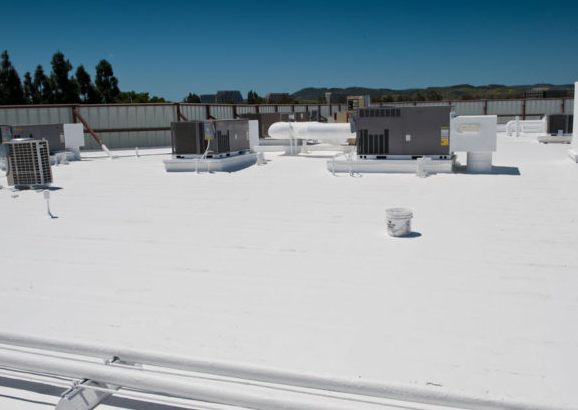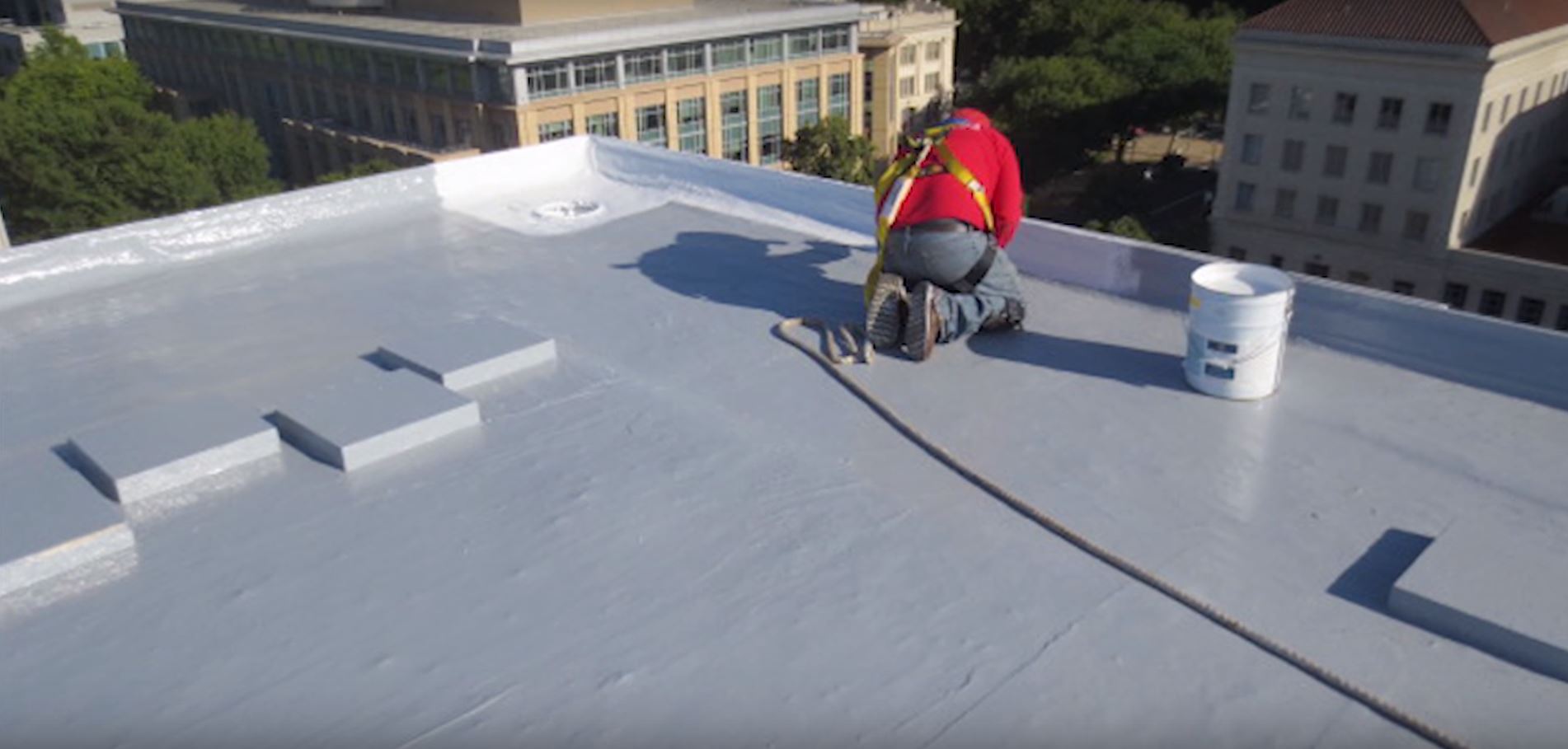TPO roofing, also known as thermoplastic roofing, is a type of roofing system made from thermoplastic olefin. It is a synthetic rubber often used in roofing because it is durable, flexible, and doesn’t break down when exposed to UV light or extreme weather. TPO roofing systems are known for their ability to reflect the sun’s rays, which helps the building absorb less heat and save money on energy costs. TPO roofing systems are also easy to install, maintain, and fix, making them a popular choice for home and business roofs. (Also Read: How Long Does it Take to Learn Flute?)
History of TPO roofing
TPO roofing was first made available in the early 1990s as an alternative to traditional roofing materials like EPDM (ethylene propylene diene monomer) and PVC (polyvinyl chloride). TPO roofing quickly became popular because it can reflect UV rays, which helps keep buildings cooler in the summer and saves money on energy bills.

In the early days of TPO roofing, there were some issues with the material, such as poor seam strength and a tendency to shrink over time. But most of these problems have been fixed by better manufacturing methods and the creation of new TPO formulations. Today, TPO roofing is widely used in both commercial and residential applications.
Types of TPO roofing systems
- Fully adhered TPO roofing systems: In a fully adhered system, the TPO membrane is adhered to the roof deck using a special adhesive. This creates a seamless, watertight system that is resistant to wind uplift and can withstand extreme weather conditions. Fully adhered systems work best on flat or low-sloped roofs because they create a strong, long-lasting bond.
- Mechanically fastened TPO roofing systems: In a mechanically fastened system, the TPO membrane is attached to the roof deck using mechanical fasteners, such as screws or plates. This creates a secure, wind-resistant system that can withstand extreme weather conditions. Mechanically fastened systems are best suited for use on roofs with a moderate slope and are a cost-effective option that is easy to install.
- Hybrid TPO roofing systems: Hybrid systems combine both adhered and mechanically fastened methods to create a customized roofing solution. In these systems, the TPO membrane is adhered to the roof deck using an adhesive, and mechanical fasteners are used to provide additional support. Hybrid systems have the best parts of both adhered and mechanically fastened systems and can be changed to fit the needs of a building.
- Ballasted TPO roofing systems: In a ballasted system, the TPO membrane is adhered to the roof deck using an adhesive and is secured in place using a layer of ballast, such as gravel or pavers. This creates a low-maintenance system that is resistant to wind uplift and can withstand extreme weather conditions. Ballasted systems are best suited for use on flat or low-sloped roofs.
Advantages of TPO roofing
1. Durability
One of the main advantages of TPO roofing is its durability. TPO roofing systems are made from a synthetic rubber material that is resistant to UV radiation and extreme weather conditions. This makes them a long-lasting roofing option that can withstand the elements and retain its integrity for 20–30 years or more with proper maintenance.
2. Weather resistance
TPO roofing systems are designed to withstand harsh weather conditions, including wind, rain, and hail. They are also resistant to ozone and other environmental pollutants, which helps extend their lifespan. This makes them a suitable choice for use in areas prone to severe weather.
3. Energy efficiency:
TPO roofing systems have a high reflectivity, which means they reflect the sun’s rays rather than absorb them. This helps reduce the amount of heat absorbed by the building, leading to lower energy costs. TPO roofing systems can help a building use less energy overall. This makes them a good choice for the environment and for saving money.
4. Easy installation
TPO roofing systems are relatively easy to install, especially when compared to other types of roofing materials. They can be put up quickly and easily, which can save money on labor costs and make the process of putting them up smoother.
5. Low maintenance
TPO roofing systems require minimal maintenance, which helps to save on long-term costs. They can be easily repaired if needed, and any repairs can be done quickly and efficiently. This makes TPO roofing systems a low-maintenance and cost-effective choice.
6. Environmental benefits
TPO roofing systems are made from recycled materials and are fully recyclable, making them an environmentally friendly roofing option. They also help cut down on how much heat a building soaks up, which can cut down on greenhouse gas emissions.
7. Versatility
TPO roofing systems can be used on a variety of roofing surfaces, including flat or low-sloped roofs. They are also available in a range of colors, which allows for more design flexibility. TPO roofing systems are a good choice because they can be changed to fit the needs of a building.
8. Cost-effective
TPO roofing systems are generally more cost-effective than other types of roofing materials, such as PVC or EPDM. They are also more durable and require less maintenance, which can help save on long-term costs. Overall, TPO roofing systems are commonly used for both commercial and residential buildings because of its reasonable price, long lifespan, and little upkeep requirements.
Installation process for TPO roofing
TPO roofing can be put on in different ways, depending on the type of TPO roofing system being used and the state of the roof deck. Here’s a general rundown of what needs to be done to install a TPO roofing system:
- Preparation: The first step in the installation process is to prepare the roof deck for the TPO membrane. This could mean fixing any damage to the deck, cleaning the surface, and, if needed, putting up a vapor barrier.
- Installation of the TPO membrane: The next step is to install the TPO membrane. In a fully adhered system, the membrane is adhered to the roof deck using a special adhesive. For a mechanically fastened system, the membrane is attached to the roof deck using mechanical fasteners, such as screws or plates.
- Seaming: The TPO membrane is typically made up of multiple panels that need to be seamed together to create a continuous, watertight surface. In the seaming process, the edges of the panels are stuck together with heat or glue.
- Flashing: Flashing is used to seal around protrusions, such as pipes or vents, to prevent water infiltration. The flashing is put on top of the TPO membrane and held in place with either glue or screws.
- Finishing: The final step in the installation process is to finish the edges of the TPO roofing system. This could mean putting edge flashing or a coping cap on the roof to protect the edges from wind and water.
Maintenance and repair of TPO roofing
TPO roofing systems are generally low-maintenance and require minimal upkeep. But regular inspections and minor fixes can help the roof last longer and keep more expensive problems from happening. Here are some tips for maintaining and repairing TPO roofing:
Perform regular inspections
It is crucial to inspect the TPO roofing system regularly to identify any issues that may need to be addressed. The building’s owner, manager, or skilled roofing contractor can complete this.
Remove debris
Debris such as leaves and twigs, can accumulate on the TPO roofing system, which can trap moisture and lead to leaks. Regularly removing debris from the roof is vital to prevent water infiltration.
Repair minor damages
If any small damages are identified during an inspection, it is essential to repair them promptly to prevent them from turning into larger, more costly issues. Minor damages can typically be repaired using patches or adhesive.
Check for ponding water
Ponding water (standing water) on the roof can cause the TPO membrane to stretch or become damaged, leading to leaks. It is important to check for ponding water and take steps to correct any drainage issues.
Follow the manufacturer’s recommendations
It is important to follow the manufacturer’s recommendations for maintaining and repairing the TPO roofing system. This may include using specific cleaners or adhesives and avoiding certain types of foot traffic on the roof.
Conclusion
TPO roofing is a popular choice for both commercial and residential buildings because it saves money on energy costs, lasts a long time, and can be shaped in different ways. TPO roofing systems can be fully adhered, loose-laid, or mechanically attached. To install a TPO roofing system, you have to prepare the roof deck, put down the TPO membrane, and then flash and seal the roof. Proper maintenance and repairs are important to ensure the longevity of a TPO roofing system. With the right care, TPO roofing can provide reliable protection for buildings for many years. (Also Read: How to Post Shorts on YouTube)












